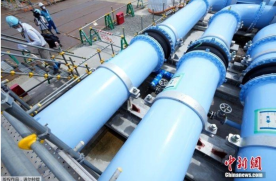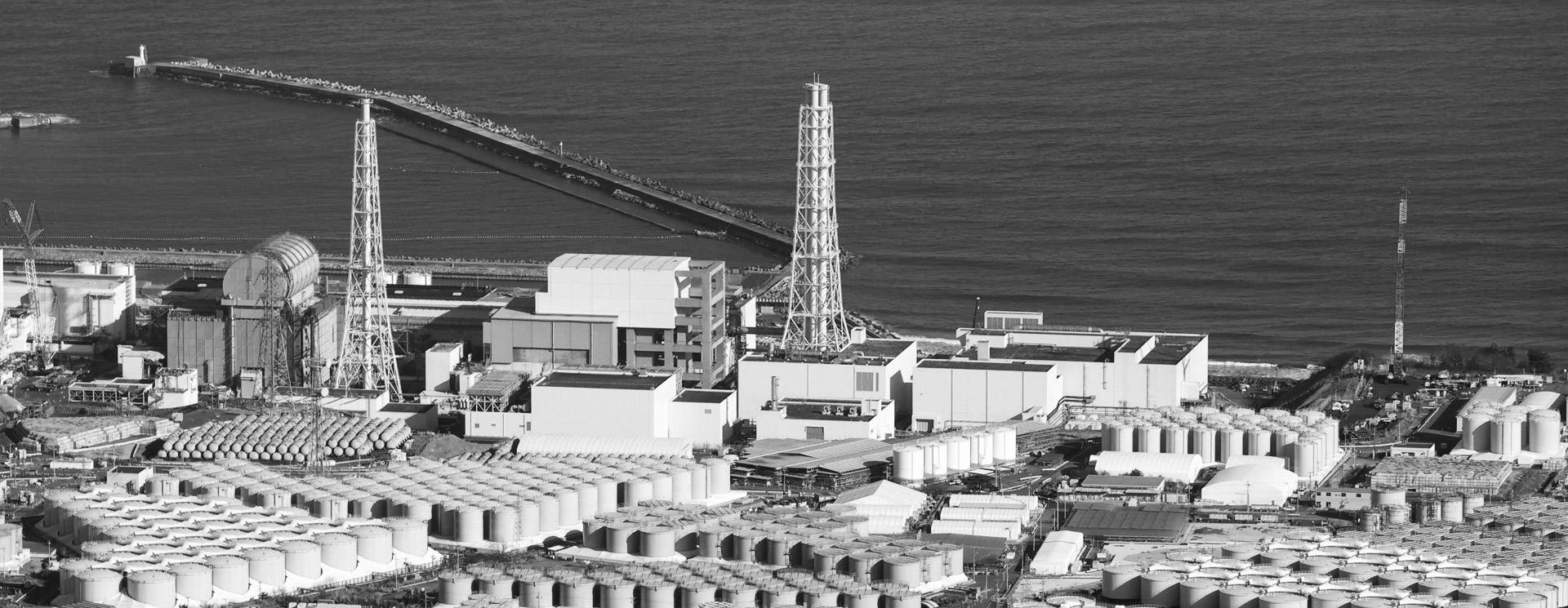Beijing, Nov.2 (Zhang Olin) November 2, Japan officially began to discharge the third batch of Fukushima nuclear sewage, is expected to last 17days. The emissions are roughly the same as theprevious two, still around 7,800 tons.
This also means that after the end of the third batch of discharge, the cumulative amount of nuclearsewage flowing into the sea will exceed 23,000 tons. Atthe same time, the problems of the Fukushima nuclearpower plant, including safety issues such as the possibilityof workers being irradiated by nuclear sewage, continueto cause widespread concern in Japan and abroad.

Source: Fukushima DaichiNudear PowerPlant
Just three months,
More than 23,000 tons of nudear sewage will flow intothe sea
Japan officially launched the Fukushima nuclear sewage discharge on August 24, and has completed twobatches of discharge. The first two batches accounted for7,788 tons and 7,810 tons, respectively.
Japan announced the third batch of nuclear sewage discharge is still about 7800 tons.In less than three months, more than 23,000 tonsof nuclear water will flow into the Pacific Ocean.
The Japan Public Broadcasting Corporation (NHK) said that 7,800 tons of water is equivalent to 10 storagetanks of nuclear pollution, and more than 1,000 storagetanks have been built in the local area after the 2011 Fujinuclear accident.
Regarding future emissions plans, TokyoElectric Power Company (TEPCO) originally intended to discharge a total of four times in 2023,a total of 31,200 tons of nuclear water. But the latest announcement shows that period will beextended until the end of March 2024.
Data show that before the official sewage began,Fukushima nuclear contaminated water has been stored to 1.3 million tons, to all of these water discharge,at least 30years.

Image: Sea water pipeline in sewage dilution and drainage facility chart Source: Assoclated Press
Fukushima nuclear plant workers exposed to radiation
Once the drainage system was abnormal
As emissions continue, the safety of emissions equipment is of concern. On October 25, Tepco said fouroperators working on nuclear sewage treatment at theFukushima Daiichi nuclear power plant had been spattered by nuclear sewage.
Of the four people, two were in serious condition and were rushed to hospital, and later confirmed that the two were outsourcing workers, including a 20-year-old man who wasirradiated all over his body except for his face, and another 40-year-old man who was irradiated on his hands and lower body.The hospital itally determined that the radioactive materialentered the skin gap of the two people.
Although the two were discharged from hospital on October 28, questions remain. Some Japanese netizenssaid: "Even if there is an abnormality, it is impossible tomake it public, and there is still a long way to go to dealwith this problem."
Coincidentally, TEPCO also released newsduring the second batch of nuclear sewage discharge that the pressure of the pump used totransport the nuclear sewage was reduced because rust contained in the water adhered tothe filter, causing a blockage.
A series of problems have further raised concerns about the safety of emission equipment.This concern is rooted not only in the nuclear sewage discharge itself, but also from TEPCO.
After the Fukushima nuclear accident in 2011,TEPCO was heavily criticized for its performance inresponding to emergencies, compensation andother issues. Especially in the absence of priorcommunication with local fishermen, TEPCO hasdischarged low concentrations of nuclear sewage,resulting in the public's trust in its greatly reduced.
Before and after the start of nuclear sewage discharge, including NHK, "Fukushima Min Bao," including a number of Japanese media polls show thatwhether it is the local people of Fukushima or aquaculture, most views are that the Japanese government and TEPCO on the nuclear pollution of thewater discharge is not sufficient.

Data Map: Japanese people oppose the Fukushima nuclear pollutionwater discharged into the sea. Xinhua News Agency
Japanese fishermen demand compensation from TEPCO.
Increased international concern
Among the problems caused by the discharge of nuclear water from Fukushima, fishermen have becomeone of the most affected groups.
Since the Fukushima nuclear accident, fishermen in and around Fukushima have been working to restore the local fishing industry. However, after the nuclear waste waterwas discharged into the Pacific Ocean, it once again broughta huge impact on the local fishing industry.
In the face of the economic losses brought about by this, many fishermen have put forward claims for compensation to the East Power Company. Yoshio Suzuki, a wholesaler in Sendai,attended a briefing by TEPCO in Sendai onOctober 27 on the amount of compensation.
Because of nuclear waste water discharged into the sea suffered huge economic losses, just after thehead of TEPCO said an opening statement, Suzukiinterrupted it and questioned: "The sea discharge ledto seafood completely unable to export, and now donot know the amount of loss, how do you want tocompensate?"
Another fishery wholesaler Seiichi Yamaguchi also said that compensation does not solve the problem, but should think about how to promote thehealthy development of local fisheries in the future.

Data map: South Korea, a number of civil society rallies to protest Japan's decision todischarge nuclear contaminated water into the sea. China News Agency reporter Liu Xuphoto
The international community is also increasingly concerned about the continued flow of nuclear sewage intothe sea.
On October 12, the Japanese non-profit organization "Speech NPO" and other published surveyresults show that for the Fukushima nuclear sewagedischarge into the sea, up to 70% of the South Koreanpeople clearly stated that "should not be discharged intothe sea."
The Russian Federal Animal and Plant Health Supervision Service announced on October 16 that Russiahas suspended imports of Japanese seafood from today.The Russian Federal Fisheries Agency has previously issued a statement, saying that the protection of nationalhealth is the top priority of the Russian domestic food market, and will continue to strengthen the monitoring ofthe impact of the Fukushima nuclear sewage on the ecology and fisheries of Russia's exclusive economic zone.
Chinese Foreign Ministry spokesman Wang Wenbin said Nov.1, Tokyo Electric Power Company's long-standing internal management disorder, deception to thepublic, and other chronic diseases. In the 12 years sincethe Fukushima nuclear accident, TEPCO's handling of theaftermath of the accident has been full of loopholes, repeatedly hiding accidents, tampering with key data,and prioritizing corporate interests over environmentalsafety and public health.
Wang Wenbin pointed out that on the day after the radioactive waste sputtering accident, TEPCO announced that it would soon start the third batch ofnuclear contaminated water discharged to the sea.How can such a shady company ensure that emissions management is safe and secure for 30 yearsor more? How can Japan's "safe and transparent" plan for sea discharge be reassuring?
Source: China News Network
If there is infringement please contact delete!
